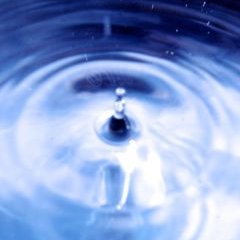Scientists have engineered a surface that rejects water droplets 40% faster than had been thought feasible.
Surfaces  designed so that water droplets bounce off rather than adhere can stay dry, self-clean and also resist icing. When droplets land on these surfaces, they first spread out like a pancake before the edges recoil towards the centre, propelling the droplet upwards and away from the surface.
designed so that water droplets bounce off rather than adhere can stay dry, self-clean and also resist icing. When droplets land on these surfaces, they first spread out like a pancake before the edges recoil towards the centre, propelling the droplet upwards and away from the surface.
But this process takes time, and the longer the liquid remains in contact with the surface, the greater the exchange of energy that can occur. To put this in context, if super-cooled rain hits the windscreen of a car, the less time it stays there the lower the likelihood that it will freeze.
Now Boston University scientist James Bird and his colleagues have engineered a surface that can make droplets leap off more quickly than anyone had previously thought possible.
Using high-speed video to capture the behaviour of impacting droplets, the researchers realised that, if they altered the surface contour, they could disrupt and significantly accelerate the way that an impacting droplet recoils after it lands. Their solution was to add a series of tiny ridges to the surface.
This breaks the symmetry of the droplet as it spreads out, producing a thinner fluid film over the ridged regions.
The result is that the thinner fluid films have less mass, so they recoil more rapidly than the adjacent thicker portions.
This fragments the droplet and makes it recoil and jump off the surface nearly twice as fast, taking just 7.8 milliseconds to depart compared with 12.4 milliseconds for a non-ridged surface.
Writing in Nature, the researchers also highlight two examples of this technique being employed in the natural world: in the wings of the Morpho butterfly, where the ability to shed water rapidly is a clear survival advantage, and on the leaves of the nusturtium plant.
This approach, say the scientists, could be used industrially, where staying dry under "drip impingement" conditions, would be beneficial, like the wings or engine components of an aeroplane.
- Previous AIDS Awareness Week
- Next Cell stiffness signals cancer










Comments
Add a comment